We sat down with some of the engineers who created the new FREE® Series to pick their brain on how this tool collection came to be.
Billy: Hey guys! Thanks for taking the time to chat with me. Before we get started can you introduce yourself, your role and tell us how long you’ve been with Leatherman®?
Matt: I’m Matt Brown. I’ve been here 6 years and I’m a design engineer.
Adam: I’m Adam Lazenby, been here 5 years, design engineer.
Jeremy: Jeremy Rodriguez, been here for almost 7 years and I’m a product manager.
Peter: And I’m Peter Parker. I’ve been here for 9 years and I’m also a design engineer. Technically, I’m the lead design engineer but that’s just because I’m old.
Billy: That just means you’ve been here for a while.
Peter: *laughs* Yup, nine years.
Billy: So first question, how much of a departure is the new FREE® collection from our current lineup of tools?
Adam: In terms of mechanism entirely—in terms of function, not much.
Peter: Yeah, you’re probably wondering what does it do? Well, it does everything the Wave does equal to or better. It’s important to note, that’s not the selling point of this new collection. Look at these screwdrivers… we have not taken these screwdrivers to a new level of, let’s call it, “screwdriver-ness". That is if anybody looks at this they say, “That looks like the Wingman screwdriver." So, it’s about everything else. It’s not about the world’s best screwdriver it is about the world’s best access to a multi-tool screwdriver.
Matt: You ever use this thing? *holds up the Brewzer*
Billy: No, I haven’t.
Matt: It’s awesome. It’s a great keychain tool on its own, but we’ve never incorporated it into one of our multi-tools before. One of the primary goals of this project was to stick to the functionality of our existing products and improve and incorporate them into an all-new tool. Essentially, what we’re saying is the implements in FREE® are not really that different from our legacy stuff. This implement is a good example of one thing that is new and different that you aren’t going to get on any other Leatherman® multi-tool.
Adam: One key distinction is we did not reinvent what a multi-tool is. It’s effectively the same thing. For all the reasons you’d put a Wave in your pocket you’d put a FREE® in your pocket. However, what the new collection does do is increase the ease of use for the individual carrying the tool.
Peter: The FREE® makes it easier to tackle those problems you’ve always been tackling with your Leatherman®.
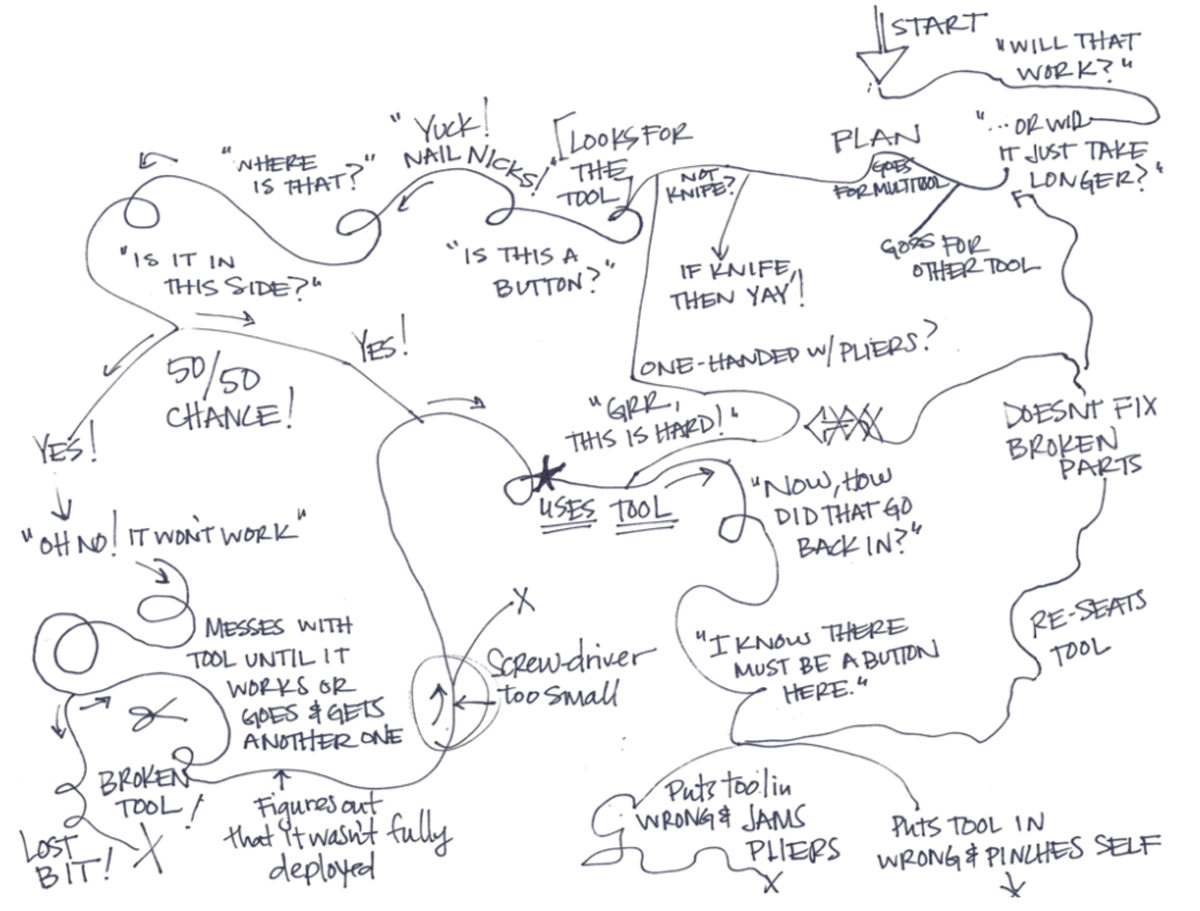
Billy: Perfect segue into my next question, what are the standout features and implements of the FREE® series, specifically the “P" series?
Jeremy: For me, it’s everything that makes FREE® “free" and that’s the magnetic architecture.
Peter: It’s the density of tools you get for how light and easily it fits into your pocket.
Jeremy: I guess what we’re saying is, it’s not about the implements that makes these tools great. it’s the technology that’s in these tools that makes this new collection standout. Really, there’s no reason to redefine how somebody uses a screwdriver or when they might need one. What we’re trying to do is improve upon the user experience.
Matt: Like single-handed function, the ability to use gloves—just smooth function overall…
Peter: Plus, it just feels awesome. You don’t want to take it out of your hands.
Matt: *Opens the knife blade until it “clicks"* Just like this kind of feedback the tool gives letting you know it’s locked and ready to go or it’s shut and you can put it away. You don’t have to be looking at the tool to tell. It’s that kind of stuff you just won’t find in the Wave®, Charge®, or in our competitor products. It accomplishes everything you need it to do. But we wanted to create “what’s next" in multipurpose tools.
Peter: The Wave® is one of the greatest tools of all time and it performs great, but the new technology in FREE® takes multi-tools to the next level. This is special. *Points to P Series*
Matt: People grab a really nice pocket knife from whoever and they play with it. It clicks and snaps and it’s validating to work the mechanism. Our goal was to bring those elements into a multi-tool while keeping it true to Leatherman®. We’re trying to get a premium level of haptics and smoothness into all these implements on a tool. Also, the difference between a pocket knife and a multi-tool is you have to be able to use the jaws, grip it, twist and kick it. So, we had some pretty nice opportunities to improve performance as well. The functionality is similar to existing tools, but it’s going to last longer doing those same things. We got rid of a lot of springs which can rust, crack and even bend or lose force. By integrating magnets, which basically have infinite cycle life, we’ve also greatly increased the durability of the tool.
Adam: Yeah. One analogy that seems to illustrate the difference between the FREE® line and what we did with the Wave is like a Ford F150 from the early 80s, it would get the job done. However, a 2019 Ford F150, well, you’re actually going to enjoy sitting in too. *laughs* The original PST or the original Wave got the job done but the FREE® gets the job done in a way that’s pleasant enough that you’ll want to play with it because it’ll be smoother and easier to get to all of the tools. In essence, it’s better, it’s nicer, it’s smoother, so it’s everything a Leatherman® does but feels modern and more comfortable.

Billy: Well, it seems like a lot of first reactions were “It’s just a multi-tool. I don’t get it." But the people that know about Leatherman® and other multi-tools are excited because they know it’s going to be that much smoother to use and that much more accessible.
Matt: You really need to touch the FREE® series to feel the difference. It’s watching it swing around and hearing the clicks and pops in your hand. It’s really a new experience and approach.
Billy: Oh yeah. I bet there are a few guys out there opening and closing the tool thinking, “This thing just sounds badass."
Matt: All the decisions surrounding how to make it function and move were based off of that. Adam figured out new ways to package the tool and get the springs to work, but when the time came to actually make it we were like, well, this has never been done before. Where do we even start? *laughs*
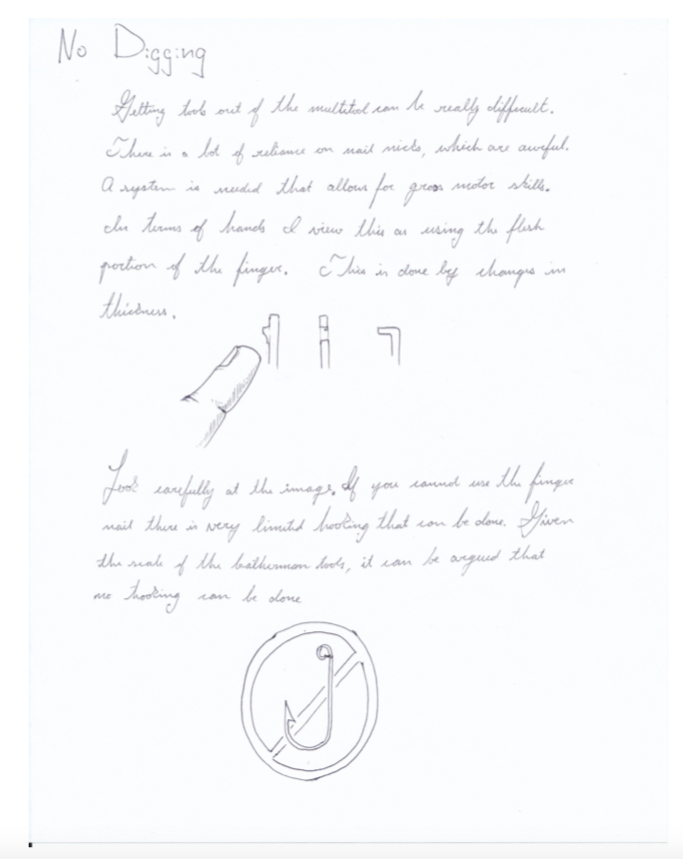
Billy: How long ago did the process begin?
Adam: So, it began four-five years ago. Myself and one other industrial designer were given space in an external design consultancy to work on this project. We worked with two of their designers and one of their product design researchers for a month talking to consumers, banging out quick prototypes, and learning and building up the core targets. Some things we landed on were one hand-opening, epic haptics, no fingernails, no digging outside opening the modular design and being able to easily have part share across multiple implements. These were all things we learned from watching people “fail" at current multi-tools. After watching people get scared or nervous or not being able to close something and getting embarrassed and just setting it down putting their hands in their pocket helped us come back with a big list of requirements.
Peter: Sorry to interrupt but the thing here that I want to focus on in the first part of the story is that it didn’t come from us standing around brainstorming in a conference room. It wasn’t an internal thing where we’re like, “What’s the coolest thing we could do next?" We went offsite and started listening to what people wanted to do. We interviewed people. It was consumer market focused. Not like, “Hey we have a cool thing. What do you think about it?" But what do you think about multi-tools? What do you do? How would you use it? Let’s see you do it. We didn’t actually come up with it, consumers told us what they wanted.
Adam: When the researcher would film people using multi-tools, we just saw their hands. All of the videos were from here down *points to shoulders*. They were worried we’d focus on their faces and them talking. They wanted us to fully focus on how the individual moved the tool. Something we noticed was that anything that was “nice to play with" the users would sit there and play with it. If you sit in a meeting with someone after they’ve done this once *opens tool and clicks into place* the room gets clicking. Another thing we noticed was people would sit there and rub a soft spot on the tool—almost as if it were a worry-stone on the side of a multi-tool and that was where we saw another need. And that was really emphasizing that if you make something nice to touch people just inherently touch it more often and it’ll be something that doesn’t just live in their pocket, but something they’ll actively pick up and hold. So that’s the genesis of it. Then we came back to the office and riffed back and forth working with some of the other engineers. Then we started creating prototypes which went through lock development to meet the needs of having everything on one side, outside opening, a bunch of metal prototypes, then we got to these specific metal prototypes, brought in a bunch of people to test them. We talked to a bunch of people for initial research and then we brought people in to test them asking them, “What do you think of them? Did we do it?" And so, once they played with them for a while in our conference room then we refined the design further and made these tools. You made these ones and we sent them out for a month across the country to known Wave users and say, “Take the wave out of your pocket replace it with this for a month."
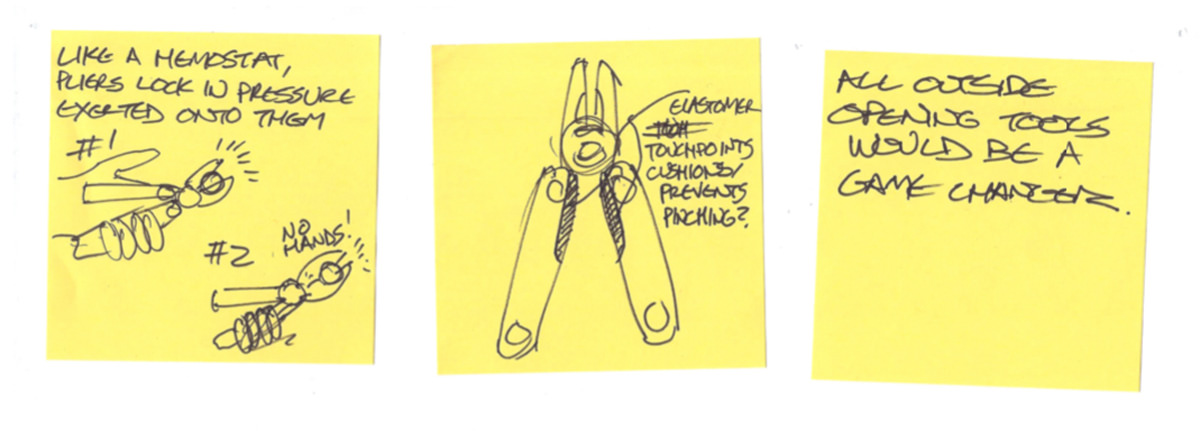
Peter: These testers were what we call “core users", people who currently carry a Leatherman® everyday either for work or as part of and either use them on the job or use them as part of their recreational activities.
Adam: We also took these prototypes and sent them across the country and received in-depth feedback from the testers.
Peter: They were functioning tools and we didn’t tell them anything about it other than here’s a new concept we’re thinking about. Try it out. We didn’t say, “there’s magnets!"
Adam: We did prompt them on how to open it because we thought this will be a little different for what people are used to. We knew that we’ve programed people to use their fingernails to deploy the tools, but we didn’t want people to have to rely on their fingernails. So, we designed the tools to use the pads of your fingers to gain access to the individual implements. You can’t use your finger nails, so it goes against some of your instincts but once you learn it is significantly better.
Matt: Most of our current tools contain two different types of locking mechanisms. So, traditionally you had to learn how to use a liner-lock and an implement-lock. The new FREE® tools utilize one type of lock for the whole tool.
Adam: A wave has something like six locks, two different kinds, but there’s six of them total. And this *pointing to the P2* has two. It’s significantly simpler.
Billy: How long did it take to develop the first metal prototype?
Adam: First rough one? Probably six months.
Billy: Wow, that seems fast.
Adam: It was six months to get here *points to first prototype* but it was two years to get there *points to second prototype*
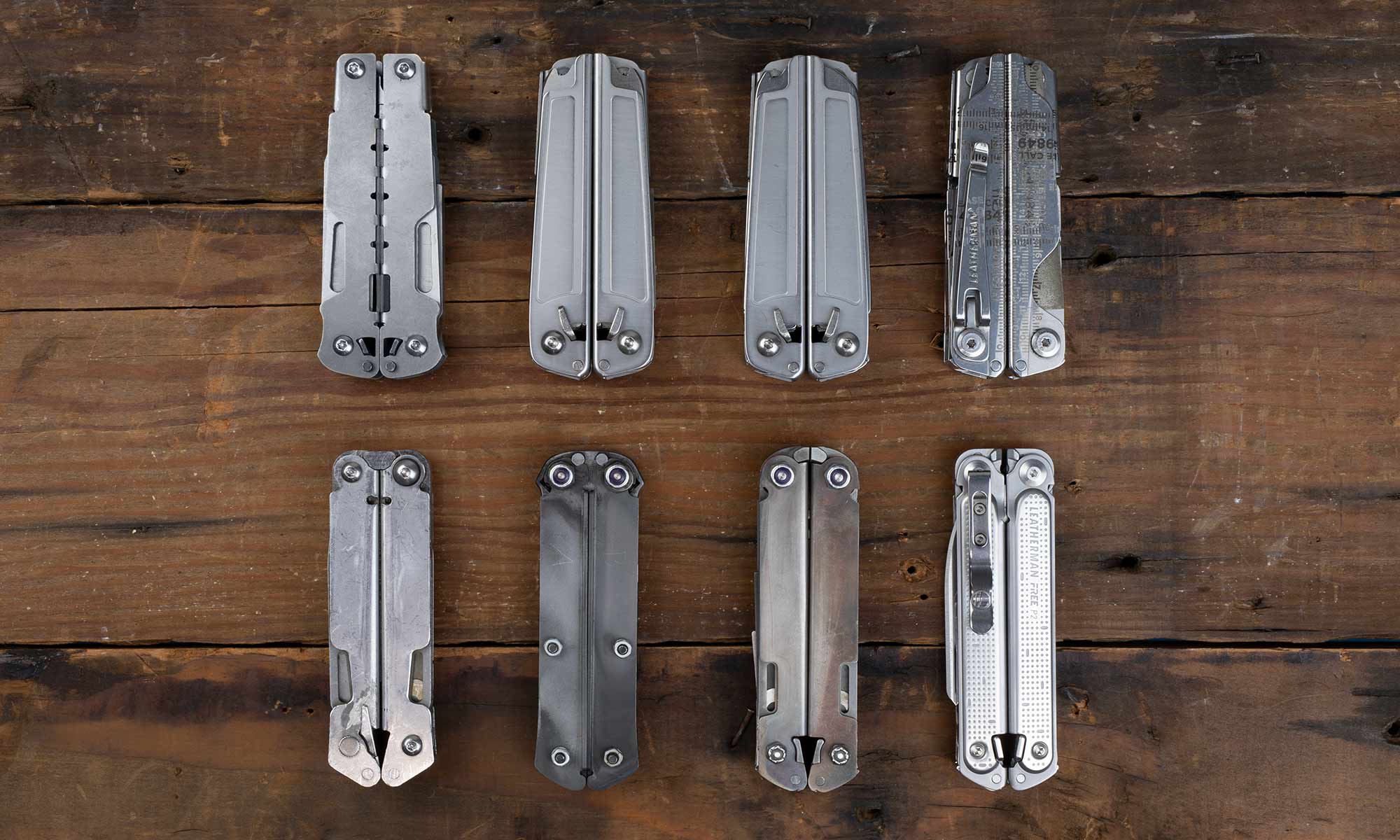
Peter: It’s important to note, this wasn’t a full-time gig. However, it was brewing in the background. You know, some days you’re working on it all day and then you don’t touch it for a month. At one point, I worked on it regularly for three months and then we put the project on hold so, I didn’t look at it for another six months.
Adam: And so, we developed a tool that was very usable, and people liked it, but it had some issues. The biggest being its weight and size. If you take these outside profiles and you hold a Wave right next to it, you can see the outside profiles are almost identical. But this tool *points to first prototype* is big, heavy, and dense. There is very little air in here. It’s about as solid as we can make it. And that was a problem.
Peter: We compiled all the feedback, made recommendations and then were instructed to walk away from the project for six months, maybe longer.
Adam: I continued to dabble in it. I knew we’d eventually continue with the project, so when we finally moved forward, I had some rough things figured out. If you look at the size difference between the prototype and where we ended up you can see a huge difference. The size was one of the more challenging aspects of the project. I spent years to make a prototype that was big, and too heavy and I knew we had to do substantially better. We definitely accomplished that but it took me a good chunk longer to figure out subtle details to go from one prototype to the finished product.
Peter: A whole new sort of mechanism came about from this project, which is pretty cool.
Adam: From there, we went back and forth while continuing the develop the new line. The banter went like, “Oh, that’s a problem and we don’t know how to solve this. It’s big it’s heavy it’s not as remarkable as you wanted it to be." As the project progressed, we were able to solve a lot of those problems and get something that is much more elegant in form and factor.
Billy: Yeah, sometimes you need to give yourself space to rethink and problem solve. It always seems to enable me to come back with a new approach.
Peter: I’ve heard a couple times, “they worked on it for five years!" It’s easy to visualize us sweating and slaving for five years, but it was really more, we started thinking about it five years ago and began creating prototypes, which we’d set aside and continue thinking. We wanted to take time to ensure the project was done right. We spent a lot of time contemplating where we wanted to go.
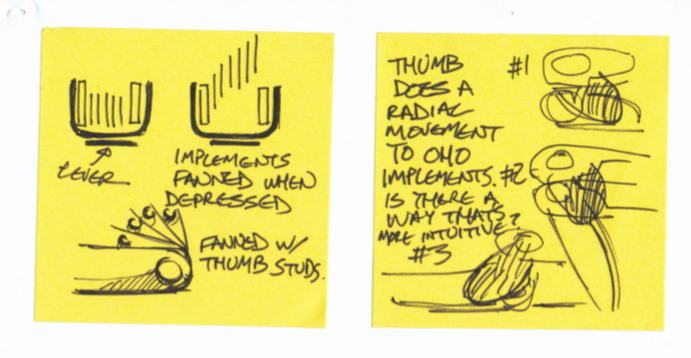
Billy: Is there a specific group you think the new collection will appeal to or is it something everyone could find useful?
Adam: The P Series will definitely appeal to a specific segment of the population. It’s for that person who gets genuine pleasure out the ability to fix something on the fly.
Peter: We’re talking about what we internally call the “save-the-day" people.
Adam: What’s pretty cool is this mentality is independent of age, gender, ethnicity, any of that. There are people that have the approach of “I see it. It was broken. I fixed it. And that was great." All of those people will appreciate this new collection significantly because it is a slim enough to still fit in your pocket or in your bag, which makes it that much more likely it will be on you. All of those aspects make it close to our core consumer.
Matt: On the same note, if you’re used to our products this is going to appeal to you because it feels so smooth and high-end. If you’re not used to our product or multi-tools in general, it’s going to set the bar for how you think a tool should feel in your hand.
Billy: Just being around the office, you see people playing with their FREE® tools, every meeting has become noticeably louder. *laughs*
Matt: Right, I know it’s more likely to end up in my pocket. I never want to leave without it. I mean, it’s basically a functional fidget spinner. *laughs*
Billy: Yup, I’m starting to realize that. Well thanks for taking some time to chat about the new FREE® Series guys. Pretty stoked, the “P series" is out and available to the public.
Adam: So are we! *laughs*
Jeremy: We’re definitely excited to get this in our consumers’ hands.
The P-Series is now live, look for the rest of the collection later this summer.